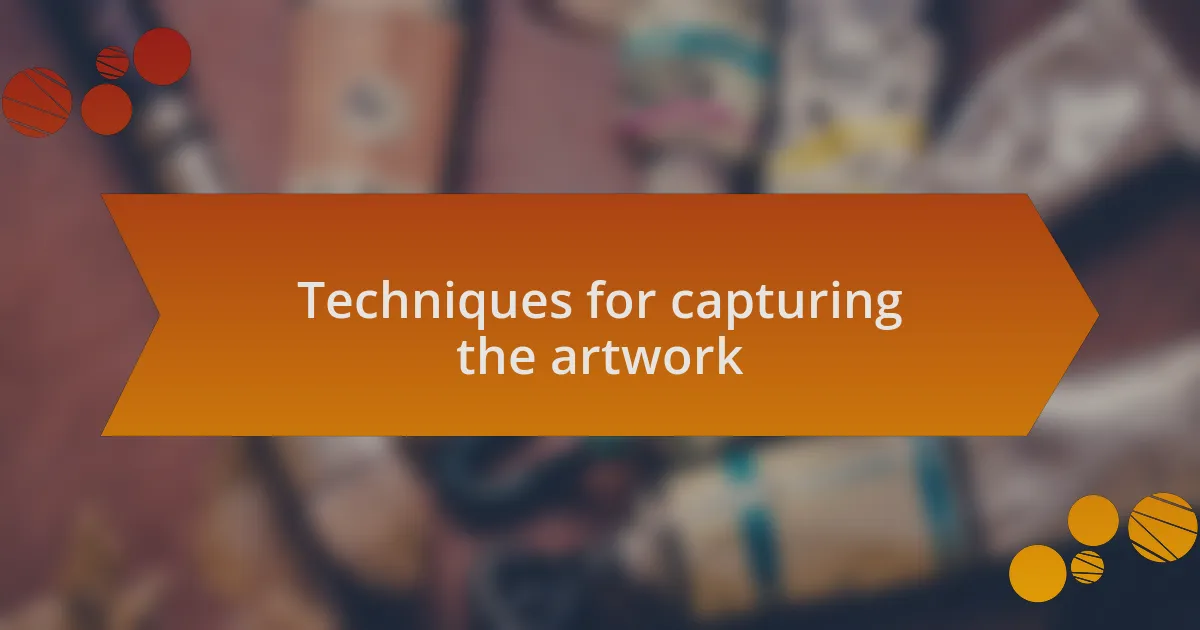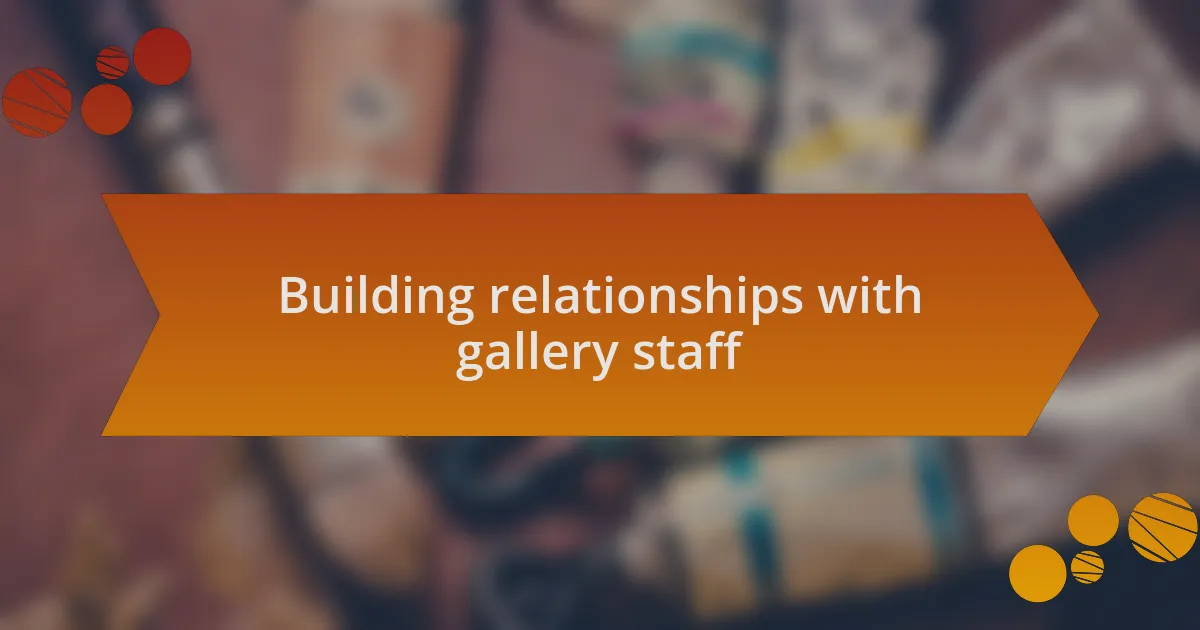Key takeaways:
- Event photography captures the atmosphere and emotions of gatherings, turning fleeting moments into lasting memories.
- Effective use of lighting, the right lens, and close-ups are crucial techniques for capturing artwork and the viewer’s emotions.
- Building relationships with gallery staff enhances the photography experience through collaboration and shared insights about the art.
- Showing appreciation for gallery staff’s efforts can foster trust and lead to future collaborative opportunities.

Understanding event photography
Event photography captures the fleeting moments of gatherings, transforming them into lasting memories. I remember attending a friend’s wedding where every smile, tear, and dance move was documented. The photographs weren’t just pictures; they were stories that conveyed the joy and love resonating throughout the day.
One might wonder, what separates event photography from other types? For me, it’s about the atmosphere. In a bustling art opening, the excitement is palpable—people mingling, artworks being admired, and conversations deepening. Capturing that energy requires not just skill but an inherent understanding of the event’s rhythm and flow.
I once found myself amidst a corporate gala, where I had to adapt quickly to the changing dynamics of the evening. As I snapped photos, I felt the urgency to convey the underlying emotions in the room, from nervous anticipation to genuine laughter. Each click of the camera became an opportunity to reflect the real essence of the moment, reminding me why I love this art form so much.

Techniques for capturing the artwork
To truly capture artwork, lighting becomes your best ally. I remember a gallery opening where the ambient lighting cast intriguing shadows across the pieces, adding a dramatic flair. I experimented with different angles, ensuring the light highlighted the texture and color of each painting, making them come alive in the frame. How often do we overlook the interplay of light in art? Its impact is profound and can transform a good photograph into an extraordinary one.
Using the right lens can also be a game changer. At an exhibition, I found myself faced with a massive mural. My standard lens couldn’t encompass the entire scene, so I quickly switched to a wide-angle lens. This choice allowed me to portray the artwork in its full glory and capture patrons’ reactions as they immersed themselves in the experience. Have you ever experienced the magic of capturing not just the art, but the emotions it evokes in viewers?
Lastly, don’t shy away from getting close. During an artist’s talk, I zoomed in on the brushstrokes of their latest piece, revealing stunning details that often go unnoticed. These close-ups can tell a rich story, adding depth and context to your collection. I’ve learned that sometimes it’s those intimate moments that resonate most with viewers, allowing them to connect with the art on a more personal level.

Building relationships with gallery staff
Building relationships with gallery staff can profoundly enhance your experience as an event photographer. I recall a particularly rewarding interaction with a gallery manager who shared behind-the-scenes stories about the artists and their inspirations. These conversations not only made me feel more connected to the space, but they also informed my approach to capturing the essence of the event. Isn’t it fascinating how understanding the context behind the art can influence our perspective as photographers?
Moreover, maintaining open communication with staff fosters an environment of collaboration. At a recent exhibition, I had the opportunity to discuss the best times for capturing the crowd’s engagement without obstructing their enjoyment of the art. This teamwork not only improved my shots but also strengthened my rapport with the staff. Have you ever noticed how a few friendly conversations can lead to trust and more creative opportunities?
Lastly, showing genuine appreciation for their hard work goes a long way. After one event, I sent a thank-you note to the curator, expressing how their efforts enriched the experience for everyone involved. This simple gesture led to more collaborations in the future. I find that cultivating these relationships not only enhances my photography but also nurtures a supportive community within the gallery.